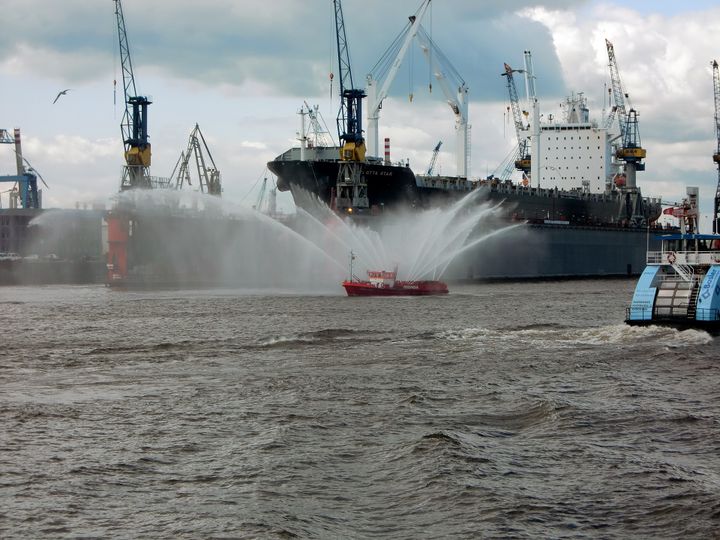
Every day, technology inches closer to automating (or outsourcing) another class of human jobs. And while some jobs may be more imminently threatened than others, no one can predict the future. All the same the idea that "Longshoreman are impervious to outsourcing" is the belief of John Ahlquist, port union expert, and political science professor.
That may be true, in sense. But the loading and unloading of shipping containers is not impervious to automation.
Shipping in the Global Economy
The unionized longshoremen, clerks, and walking bosses of the International Longshore and Warehouse Union demonstrated their clout in negotiations last year. Put simply, a shutdown of the ports could cost the American economy 2 billion dollars a day. ILWU and its 13,000 members know that they are a lynchpin in the global economy, as retailers attempt to keep up in an “Amazon-Driven Age”. While this supply chain bottleneck nets longshore workers 25 to 41 dollars an hour, it also incentivizes the automation of loading and unloading. That’s where TraPac comes in.
TracPac's Vision
TraPac LLC has demonstrated that their autonomous system can load and unload a ship in half the time required by human operators. Not only will this save time and money, the automation of docking makes the process much safer for humans and the cargo. Collisions are accepted as an inherent part of human unloading. Imagine the busiest intersection in LA, and then populate it with thousands of cranes, trucks, and shipping containers. Human error ensures accidents in such a dense, high-risk environment. With the use of algorithms, the cargo can be routed with optimum efficiency. The arduous manual/analog sorting done by human eyes and communicated through walkie talkies is eliminated when the TraPac system is allowed to maintain “hive-mind” awareness of all equipment and containers at all times. Once fully implemented, it will create an entirely different shipping system.
Environmental Benefits and High Costs
Saving time and money while improving safety are all great benefits, but the most significant benefit of automated loading may be environmental. Commercial shipments produce more than half of California’s toxic emissions… which results in asthma and other health problems for residents. Because of this, California’s Air Resources Board released the Sustainable Freight action plan. This includes the implementation of 100,000 zero-emissions hauling machines by 2030.
Unfortunately, changing the global freight system is like trying to disrupt a unicycle riding chainsaw juggler. Shipping infrastructure is already at capacity and the ships are getting larger every year. To pause operations, even for a day, is expensive and dangerous. This equipment overhaul will cost somewhere in the ballpark of 35 billion dollars. The entire redevelopment of shores may cost ten billion, perhaps even hundreds of billions of dollars.
Because of these astronomical costs, terminal operators are reaching out to the state and federal governments for assistance in the pursuit of sustainable freight.
If Brown wants to clean the air by making ports more efficient, Porras said, he should "stop big box retailers from using them as rent-free storage lots."
With his Sustainable Freight plan, Brown is offering himself as the controller the ports need. And he’s trying to harness the increased efficiency of self-driving to encourage everyone—shippers, terminal operators, union workers and truckers—to go along.
“Efficiency and the environment go hand in hand,’’ Slangerup said. “They’re two sides of the same coin.’’








